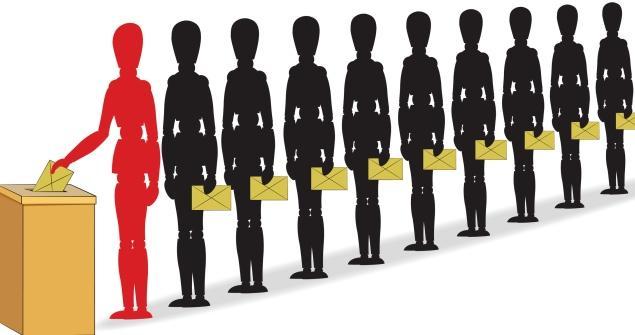

This election season I had a strategy for voting. No, not a political strategy, a logistical one: I was determined to vote in the middle of the afternoon.
You see, four years ago during the last presidential election, I went to vote around 8 AM before work. I joined a long, snaking line that circled the entire city block outside the polling place, a local elementary school. I waited patiently, growing increasingly frustrated by the long delay. I watched as some of my fellow citizens had to abandon their chance to vote in order to get to work. It was clear when I got to the front of the line after close to two hours why it was taking so long: there was one, lone poll worker checking people in. He had to look up every voter by hand in a book and have them sign next to their name. By having only one check-in station, the polling place had created a giant bottleneck.
Processing Capacity
The processing capacity at the polling place was woefully inadequate for the morning rush. The lone worker could process perhaps 120 people per hour, but 500 or 600 arrived between 7 and 9 AM to vote. Everyone was fuming…except the parents from the local PTA who made a killing running a bake sale for the captive audience. The queue grew and grew, decreasing only when the flow of people arriving abated and the backlog worked its way through the system.
Greater Throughput & Faster Processing
In a warehouse, bottlenecks can arise everywhere as orders move through many stages of processing. Where bottlenecks exist, there are several approaches to solving them depending on what is causing them: expand the labor or equipment devoted to a process (e.g., expand the number of workstations); smooth out when the work arrives at the process if possible; increase the efficiency of the process by changing something about how the orders are handled; invest in a new layout or a new facility.
Unfortunately the local government that runs the election system doesn’t have the same incentives. The officials handling that election four years ago didn’t seem to have considered any queuing or processing strategy, nor were they prepared at all for the morning rush. As an operations person it was a frustrating election, entirely apart from which politician won or lost. This year I knew how to avoid the bottleneck. I went to vote at 1 PM and found no line at all.
Are you facing productivity issues in your warehouse? If so, drop me a line in the comment section below and share your ideas.
